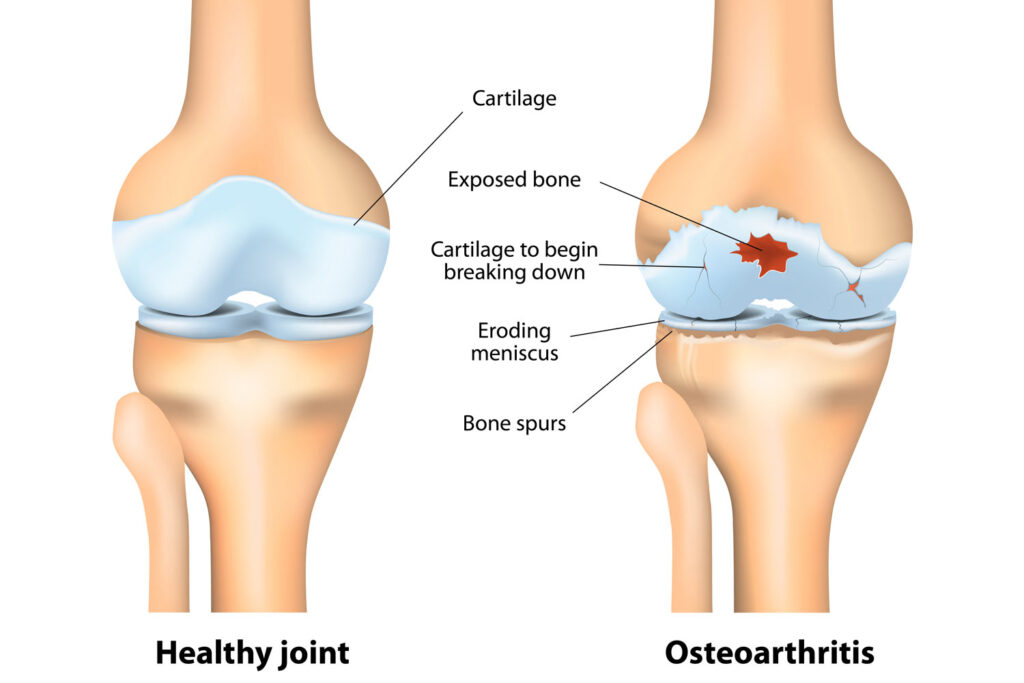Introduction
Osteoarthritis ICD 10 is the most common form of arthritis, affecting millions of people worldwide. It is a chronic condition that occurs when the protective cartilage cushioning the ends of bones wears down, causing joint pain, stiffness, and decreased mobility. For healthcare providers, accurate documentation and coding of osteoarthritis are essential—not only for patient care but also for billing, insurance, and research purposes.
The ICD-10 (International Classification of Diseases, 10th Revision) system provides specific diagnostic codes for osteoarthritis based on the affected joint and laterality. In this blog, we will break down the Osteoarthritis ICD-10 codes, their categories, importance, and best practices for accurate medical coding.
What is Osteoarthritis?
Osteoarthritis ICD 10 is often referred to as a “wear and tear” disease. While it is most common in older adults, it can also result from injury, obesity, or genetic factors. The condition can affect any joint but is most frequently seen in:
-
Knees
-
Hips
-
Hands
-
Spine
Symptoms of Osteoarthritis include:
-
Joint pain during or after movement
-
Stiffness, especially in the morning or after inactivity
-
Swelling and tenderness around the joint
-
Decreased flexibility
-
Grating sensation or bone spurs around the joint
What is ICD-10?
The International Classification of Diseases, 10th Revision (ICD-10) is a globally recognized coding system developed by the World Health Organization (WHO). It assigns alphanumeric codes to medical conditions, including osteoarthritis, allowing healthcare systems to:
-
Standardize diagnoses across hospitals and countries
-
Improve billing and insurance claims processing
-
Track disease patterns for research and public health monitoring
-
Facilitate patient treatment planning
Osteoarthritis ICD-10 Codes Overview
Osteoarthritis codes fall under the M15–M19 category within the ICD-10 system (Diseases of the musculoskeletal system and connective tissue). Each code provides detailed information about the type of osteoarthritis, the affected joint, and whether it is on the right, left, or both sides.
Categories of Osteoarthritis ICD-10 Codes
1. Polyosteoarthritis (M15)
This category covers osteoarthritis affecting multiple joints.
-
M15.0 – Primary generalized (multiple sites)
-
M15.4 – Erosive osteoarthritis
-
M15.9 – Polyosteoarthritis, unspecified
2. Osteoarthritis of Hip (M16)
-
M16.0 – Bilateral primary osteoarthritis of hip
-
M16.1 – Unilateral primary osteoarthritis of hip
-
M16.2 – Bilateral post-traumatic osteoarthritis of hip
-
M16.9 – Unspecified osteoarthritis of hip
3. Osteoarthritis of Knee (M17)
-
M17.0 – Bilateral primary osteoarthritis of knee
-
M17.1 – Unilateral primary osteoarthritis of knee
-
M17.2 – Bilateral post-traumatic osteoarthritis of knee
-
M17.9 – Unspecified osteoarthritis of knee
4. Osteoarthritis of First Carpometacarpal Joint (M18)
This affects the base of the thumb.
-
M18.0 – Bilateral primary osteoarthritis of first carpometacarpal joint
-
M18.1 – Unilateral primary osteoarthritis of first carpometacarpal joint
-
M18.9 – Unspecified osteoarthritis of first carpometacarpal joint
5. Other and Unspecified Osteoarthritis (M19)
-
M19.90 – Unspecified osteoarthritis, unspecified site
-
M19.91 – Unspecified osteoarthritis, right site
-
M19.92 – Unspecified osteoarthritis, left site
Importance of Accurate Osteoarthritis ICD-10 Coding
-
Billing and Insurance: Proper coding prevents claim denials and ensures timely reimbursement.
-
Medical Accuracy: Correctly coded records reflect a patient’s actual condition and medical history.
-
Research and Statistics: Coding accuracy contributes to global osteoarthritis data for healthcare research.
-
Treatment Planning: Detailed coding helps clinicians develop tailored treatment strategies.
Common Coding Challenges for Osteoarthritis
While ICD-10 offers detailed classification, coding for osteoarthritis can be challenging. Some common issues include:
-
Unspecified codes: Using general codes when more precise options are available.
-
Laterality confusion: Forgetting to specify right, left, or bilateral involvement.
-
Multiple joint coding: Patients with OA often have multiple affected joints, requiring multiple codes.
Medical coders must carefully review clinical notes and diagnostic imaging to ensure precise code selection.
Example Scenarios for Coding Osteoarthritis
-
Case 1: A patient with primary osteoarthritis in both knees → M17.0
-
Case 2: Osteoarthritis of the left hip, unspecified type → M16.12
-
Case 3: Polyosteoarthritis affecting multiple joints → M15.0
-
Case 4: Unspecified osteoarthritis in the right hand → M19.91
These examples show how ICD-10 codes provide specificity to describe the exact condition.
Treatment and Documentation of Osteoarthritis
Although ICD-10 is primarily for coding and classification, understanding osteoarthritis treatment helps contextualize documentation.
Common treatments include:
-
Lifestyle changes: Weight management, exercise, and diet.
-
Medications: NSAIDs, corticosteroid injections, and pain relievers.
-
Physical therapy: To improve strength and mobility.
-
Assistive devices: Braces, canes, or orthotics.
-
Surgery: Joint replacement for severe cases.
Documenting these interventions alongside ICD-10 codes ensures comprehensive patient care.
The Future of Osteoarthritis Coding
As healthcare evolves, coding systems like ICD-10 will eventually transition to ICD-11, which provides even more detailed categories. Additionally, electronic health record (EHR) systems and AI-driven coding tools are expected to improve accuracy and reduce coding errors for conditions like osteoarthritis.
Conclusion
Osteoarthritis ICD 10 is a widespread chronic condition, and accurate ICD-10 coding is essential for effective documentation, billing, and treatment planning. The ICD-10 codes for osteoarthritis (M15–M19) allow detailed classification based on the type of OA, affected joint, and laterality.
By understanding and applying the correct Osteoarthritis ICD-10 codes, healthcare professionals and coders can ensure precise records, smooth insurance processing, and better overall patient outcomes.
Whether you are a medical coder, provider, or student learning about healthcare documentation, mastering ICD-10 codes for osteoarthritis is crucial in today’s medical environment.







0 Comments